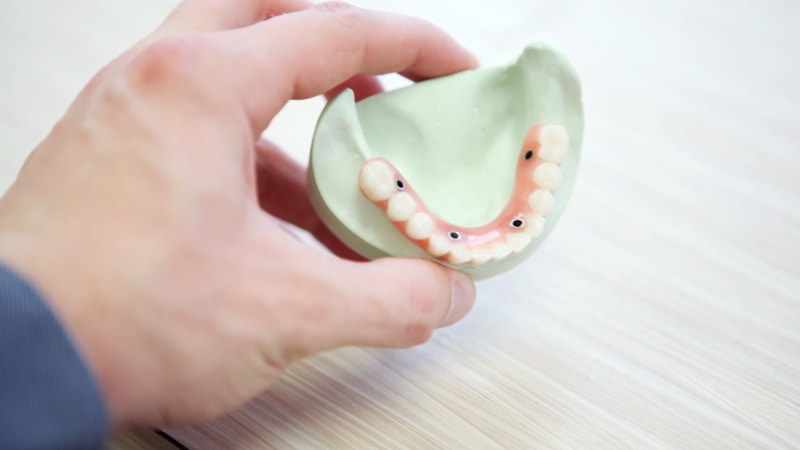Podcast
Questions and Answers
Which of the following best describes the primary difference between gingivitis and periodontitis?
Which of the following best describes the primary difference between gingivitis and periodontitis?
What is meant by 'true pocketing' in periodontal disease?
What is meant by 'true pocketing' in periodontal disease?
In terms of histological presentation, what change is primarily observed in gingivitis?
In terms of histological presentation, what change is primarily observed in gingivitis?
Which symptom is typically NOT associated with gingivitis?
Which symptom is typically NOT associated with gingivitis?
Signup and view all the answers
How is the clinical appearance of healthy gingiva characterized?
How is the clinical appearance of healthy gingiva characterized?
Signup and view all the answers
What factor is NOT considered when assessing periodontal health?
What factor is NOT considered when assessing periodontal health?
Signup and view all the answers
Which of the following best describes 'false pocketing'?
Which of the following best describes 'false pocketing'?
Signup and view all the answers
Which standard is NOT included when monitoring periodontal health?
Which standard is NOT included when monitoring periodontal health?
Signup and view all the answers
Study Notes
Gingivitis & Periodontitis Overview
- Gingivitis: Bacterial infection limited to the gingiva. It is reversible.
- Periodontitis: Bacterial infection affecting all parts of the periodontium. It is irreversible and causes destruction.
Clinical Appearance
-
Margin
- Health: Gingival margin is knife-edge, follows the tooth contour
- Gingivitis: Margin is rounded, hyperplastic (overgrown), or edematous (swollen)
- Periodontitis: Margin is retracted (pulled back), receding from the tooth
-
Color
- Health: Pink or coral pink
- Gingivitis: Red, fiery red, or bluish red (congestion)
- Periodontitis: Pink, pale, or grayish
-
Contour
- Health: Smooth, follows tooth contour
- Gingivitis: Swollen, bulbous, or festooned (scalloped)
- Periodontitis: Recession (pulling away) from the tooth
-
Consistency
- Health: Firm and resilient
- Gingivitis: Soft and spongy
- Periodontitis: Fibrotic (hard and firm)
-
Bleeding
- Health: Minimal or no bleeding
- Gingivitis: Bleeding easily on brushing or probing
- Periodontitis: Minimal bleeding, sometimes due to sensitivity
-
Texture
- Health: Smooth
- Gingivitis: Stippled or pitted
- Periodontitis: Fibrotic (hard and firm)
Differences between Gingivitis & Periodontitis
-
Gingivitis:
- Only affects the gingiva
- Reversible
-
Periodontitis:
- Affects all parts of the periodontium
- Irreversible destruction
- Results in bone loss and tooth loss.
Patient Symptoms
-
Gingivitis:
- Bleeding gums, especially during brushing and flossing
- Red, swollen, and tender gums
- Bad breath
-
Periodontitis:
- Receding gums
- Tooth sensitivity to hot and cold
- Loose teeth
- Pain or discomfort
- Pus formation
- Bad breath
"itis" Meaning & Inflammation
- "Itis" means inflammation
- Acute inflammation: Short-term, intense, and characterized by redness, swelling, pain, and heat.
- Chronic inflammation: Long-term, low-grade reaction with less obvious signs.
Safe Practitioner Framework
-
Clinical Knowledge and Skills
- C 2.6.1: Assess and manage periodontal and soft tissue health considering risk, lifestyle factors, plaque control, self-care, and compliance/response to advice.
- C 2.6.3: Monitor and record changes in periodontal health using appropriate methods.
Gingival Histology
-
Health:
- Normal sulcus depth, epithelial attachment intact
- No inflammation in the tissues
-
Gingivitis:
- Increased sulcular depth, inflamed connective tissue
- Increased inflammatory cells in the gingiva
-
Periodontitis:
- Deep pockets due to periodontal attachment loss (true pocketing)
- Bone loss, periodontal ligament destruction, and apical migration of the epithelial attachment
- Accumulation of plaque and calculus.
-
False Pocketing:
- Appears similar to a pocket but is caused by inflamed, swollen tissues
-
True Pocketing:
- Caused by loss of periodontal attachment leading to a true pocket.
Studying That Suits You
Use AI to generate personalized quizzes and flashcards to suit your learning preferences.
Related Documents
Description
This quiz covers the key differences between gingivitis and periodontitis, including their clinical appearance and symptoms. Learn to identify the health status of the gingiva based on various characteristics. Understand the significance of these conditions in oral health.




